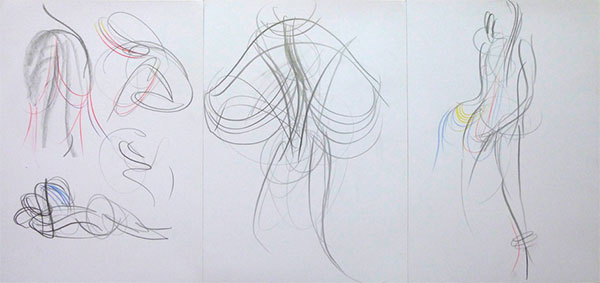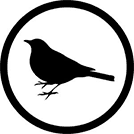Hot Stones Notwithstanding
Eszter and Pavle Thinking Thoughts on Collaboration, Documentation, and Valorisation
Dear IDOCDE teachers and readers,
In late May, when the second Research Group Meeting in Turkey is already more than a month away, and when the final phase of the Symposium preparations are being done (http://www.idocde.net/pages/98) – it is my, Eszter Gál’s, role to write the editorial. As you will see – this writing follows the development of multiple parallelly developing thoughts – which in itself reflects, I think, the fact that I act in many roles within the REFLEX Europe project (I am one of the IDOCDE founders, the Project Coordinator, and one of the researchers). This editorial, it is also important to say, differs from the previous ones as I invited Pavle Heidler (co-editor of IDOCDE) to collaborate with me in the writing of it.
In this editorial read about coordinating EU projects; collaboration, documentation and/in teaching as artistic activity; and the research group meeting in Turkey and the coming IDOCDE Symposium. Pay special attention to EARLY BIRD Symposium registration reminder, which you can see at the end of this editorial!
Enjoy your reading, beloved ones!
I am moved by the love for moving, the love for sharing and teaching, performing, and dancing. I am moved by creating and holding spaces in which others can nourish their love for moving. I am moved by sharing and making; by tracing legacy; by creating in the moment and capturing, transforming and asking more questions – about documentation. I am moved by asking what remains, and in which way it remains after the dance is danced, the class is taught; after the “magic moment” has passed. What remains within me and what remains within others?
The role of a Project Coordinator – and I state this as a dancer, as a dance teacher – is to be inside and outside simultaneously.
At times I say: “I am (just) a dancer”. Which can tell you a lot about how I think and what I pay attention to. I love dancing, moving, and being moved. To allow and listen to the kinesthetic experience of the moving body “talking” is a practice that I use to keep my dancing free from fixation. That way I am able to stay with my body as it is breathing the new and the fresh. The experience of always staying with my body turns my dancing body into a never-ending source of learning. This dancing body teaches, documents, speaks, cries, warns, satisfies, knows, listens, protects, offers, supports, asks, shows, directs, guides.
Whenever there is inspiration of any kind – I notice another kind of dance is also happening. This dance is not like dancing in a studio. Instead, it is a sensation of the inner self dancing. This inner dance has no shape, but constitutes of directions, colors, emotions, tastes, sensations, and spaces – images can come along.
I observe the following in the work of others (students, peers). This inner dance can give birth to thoughts, ideas, words, structures, that in turn come to support the creation process in the realm of the Project-like researching documentation. In other words – the inner dance can give birth to elements that support the working of “outer” or “shared” forms, such are administrative and/or social structures. For example.
To run a Project, one needs to think in terms of coordination, organization, communication, direction. The amount of work implied means that one cannot run a project alone. A team, instead, is needed. Teamwork – is a where I can be moved. (In the following sense dance is used as a metaphor.) A dance happens when the project inspires, has perspective; when it triggers challenges; where communication with partners and other researchers becomes a dialogue; when it creates and holds space in which something new can be discovered.
Working in a Project like IDOCDE, LEAP and REFLEX Europe http://www.idocde.net/pages/95/ (and within them – having multiple roles) means I get to participate in the making of a great dance! A dance with great potential, that opens towards many possibilities to practice how the inner dance structures, organisez, moves outer forms.
I am searching for how I can dance my way to (into) documenting, or where is the dance while documenting?
There is a need in me to share the documentation process with someone, to collaborate in the creation of documents as I would collaborate through making of a Project. Recognising and naming this need lead me to realize that I am a collaborative person, who functions well when surrounded by people that nourish similar interests. Even though this sensibility has been obvious since a long time – (Since childhood.) – I am still learning how to address it in every aspect of my professional life. Especially in those places, or during those activities that are not usually performed in a collaborative manner – such is all too often the documenting process.
When there is stimuli coming from inside and outside, when there is an exchange happening – it can (most of the time) propel the creation of an exciting outcome. That outcome can be a product of any sort.
This does not mean, however, that there should constantly be people around me. No. I can focus, and work alone – but what is important is to know that at certain points the findings, steps, arrivals, results will be, should be, and indeed – need to be shared. Collaborate-ing and dialogue-ing is essential. It wakens my “inner dance”, guides my reflections, takes me to new places, allows me to discover (experientially) new forms. I need people for translation, for transmission, for trance-formation. When coming to documentation of teaching it is almost obvious that this specific translation process needs to be – a shared experience.
Documenting, I’ve come to realise, does not work for me as something I have to do on my own. If I have to do it on my own, documenting all too easily becomes work – an uninspiring endeavour done because “somebody else said so”. I’m sure you will agree with the statement that there is no time and no space for more work in life anymore. There is, however, time and space, for example, for creating art when/whilst documenting. Here’s how I’m learning to think about it:
Teaching and dancing is a collaborative art making process. The material that is taught and the class itself can become Art. It follows that capturing the moments of a class / documenting a class should also be – Art. Art and dialogue lead me to conducting research on collaborative documentation with a graphic designer. The outcome of this process and many more findings from visual, written, scientific documentation will be shared during the 4th IDOCDE Symposium if you visit the programs of the Reflex Track. http://www.idocde.net/pages/98/
Drawings by Anna Holló
The core of the three year REFLEX Europe project is the meetings of the Research Group (RG). As Ulla mentions in her April editorial “picking organic oranges in Southern Turkey” – my next thought brings me to a memory from when after five full days of research we went for a short hike that took us through the Ghost Village of Kayakoy towards the cold sea where we spent some time indulging in sunshine.
“Walking up the hill through the Ghost Village I found myself touching the body of the stones the village was built with. During a very brief moment I am thrown into the past, picturing life as it was 100 years ago, sensing the aura, breathing a sense of presence that is there - and I wonder: how and what the stones and walls document? … Back in the present, walking through the forest and open fields, looking under my feet, stepping on timeless rocks and pondering over the prints of lives – the path is full of tiny flowers reaching out of the rocks – then wondering further between curved spine leafless, but breathing trees with sunlight cutting through – slowly moving on to reach the point from which the eye can reach out to the endless sea – the horizon, that is there – gaze far out – and listen inside.”
These memories, and the multi-directionality they document how my attention splits – because I’m used to looking at things from different points of views at the same time, bearing different responsibilities in mind.
“...seeing far then looking close - changing back and forth between the two perspectives. Zooming in - getting lost in detail / as if examining the world with a magnifying glass - and practicing letting the body speak. Zooming out - I widen my gaze and see what is there, what the whole is - and what the small / tiny particles encountered whilst zooming in form together in these vast and overwhelming times…”
From the hot stone to the warm keyboard, your mind travels easily. You are in the north now, in Stockholm, where the spring is at its best. The greens are as green as they will be this year, and the birds are plenty. One flew into the foyer of the studio I was working in earlier this morning. The readiness with which my colleagues and myself dropped all that we were doing in order to attend to the bird’s eventual departure – filled me with hope.
In conclusion, let me remind you that there are only six days left before the closing of the EARLY BIRD registrations to the upcoming Symposium. Please, follow this link > http://www.idocde.net/pages/104/ < to find out how to register, where to register, and how easy it is to register if only you’d do it – before JUNE 1!
We’re hoping to see you at the 4th IDOCDE Symposium in Vienna this summer, between the 29th and 31st of July! Come and rejoice as we tackle the question:
Yours Truly,
Eszter Gál and Pavle Heidler
Budapest and Stockholm
May 2016
